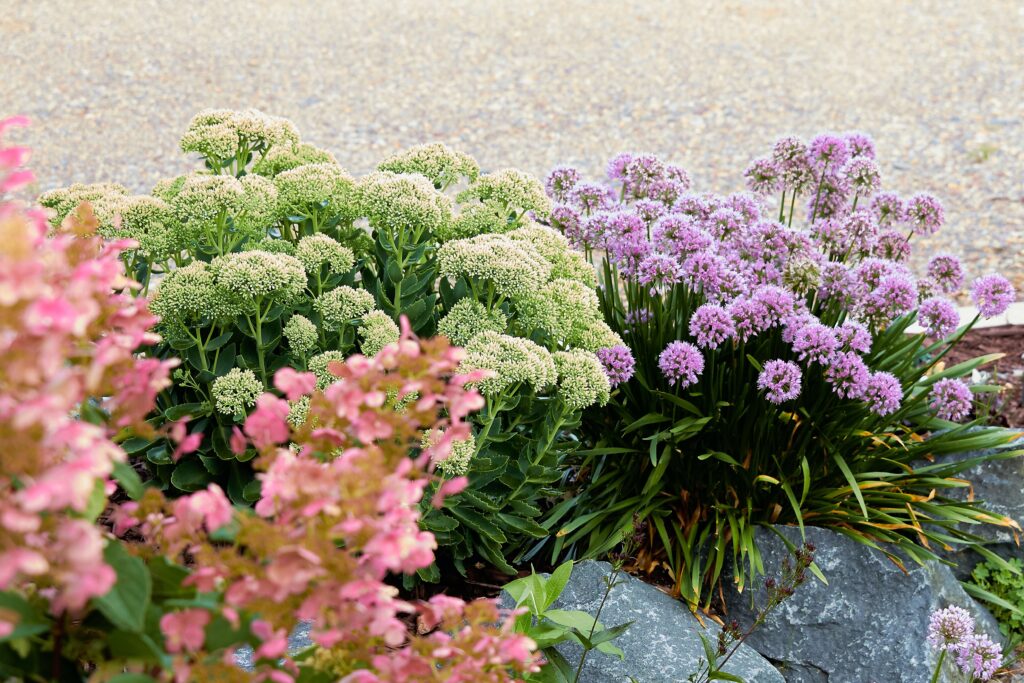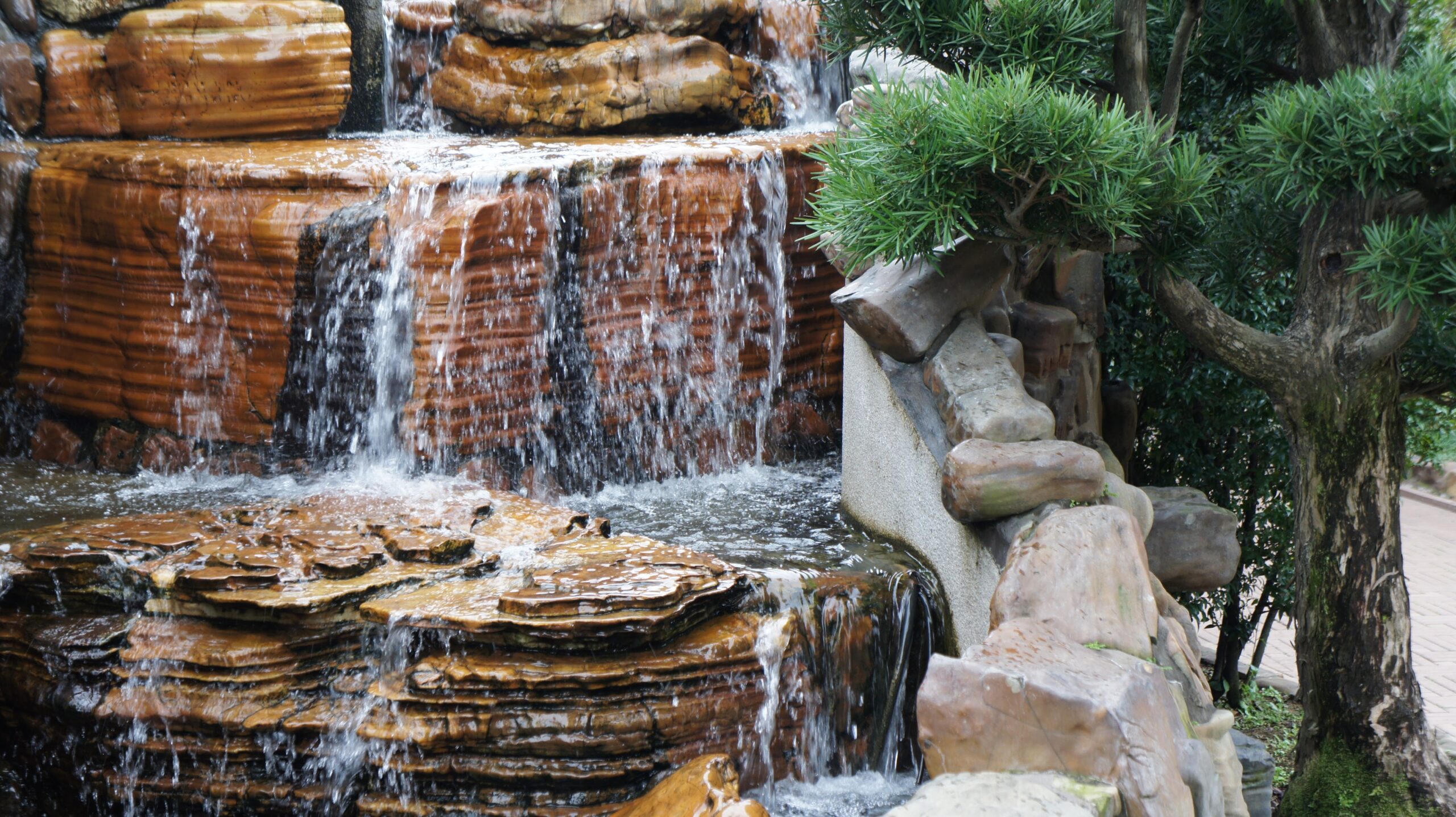Planning a landscape is always challenging. You’ve got a lot of ground to cover, zones to create, and maintenance to think about.
If this is your first time planning a xeriscape, you might feel a little intimidated by the idea of adding boulders and rocks to your yard. But the results are fantastic, and with the right plan, rockscaping can look beautiful.
If you want some help, we’ve created this quick guide on how to xeriscape with rocks so you can create an interesting, low-maintenance, drought-tolerant outdoor space.
Table of Contents
How to Xeriscape with Rocks

To xeriscape with rocks, choose a range of sizes and colors that complement your landscape design. Arrange the rocks strategically to create a focal point or natural-looking pathway. To create a professional-looking finish, add native, drought-tolerant plants and use mulch to retain moisture and suppress weeds. You could also consider installing a drip irrigation system for more efficient watering (and less maintenance).
How to Xeriscape With Rocks: 6 Basic Steps
It’s tough to figure out how to arrange rocks in a xeriscape, so here’s a quick guide to get you started.
Step #1: Plan & Design
Start by planning out your new rock garden on paper; this saves a lot of time and effort moving around heavy rocks. Choose a sunny spot if you’re going to add plants, and start by mapping out any paths, stepping stones, or large features.
When it comes to placing the rocks, think about varying heights and textures to add interest. Just one or two large boulders can add a focal point, whereas smaller rocks, pebbles, gravel, and even a water feature can add layers to the design.
When it comes to plants, make sure you have a plan in place for watering. You don’t want to end up with plants in hard-to-reach areas that can’t get adequate water or light.
Step #2: Site Preparation
The best spot for a rockscape is on a slight slope. This allows any rainwater to drain away naturally, preventing pools or floods from forming. If your garden doesn’t have a natural slope, you can add one in by creating mounds of dirt with a little digging.
Prep the soil by mixing a few bulky rocks into the earth and topping it with a layer of sand. This will give you the best drainage.
Our aim is to create different levels for interest, so you might need to add a retaining wall or some large rocks to create these levels.
Step #3: Installing Rocks
So, how do you xeriscape with rocks? If you don’t have any rocks lying around, you’ll probably find a local landscaping rock supplier who will have some attractive boulders for your new xeriscape.
Install the largest rock as either a centerpiece or as a backdrop, and work from there. Work in odd numbers for larger rocks to get the most natural appearance – three is always a good option for creating balance.
Large rocks and boulders should be settled at least a third into the ground to make them stable. If they just sit on top of the earth, there’s a good chance they’ll fall over or shift in high winds or a storm.
Once you have the largest rocks in place, add smaller rocks of varying sizes around them to fill in the gaps and create an interesting landscape.
Step #4: Planting
Planting comes once the rocks are in place. You could add anything from desert succulents to creeping vines, depending on your personal style. Just remember to get drought-tolerant species that can handle minimal water and rocky terrain.
We like to add a few larger flowering native plants near the larger boulders and then some ground-covering species around the bottom to give a more natural-looking effect. Aubrietia, Baby’s Breath, and Bellflower are all great choices for a xeriscape with rocks.
Step #5: Mulching
If you are planting plants (not seeds), a layer of mulch ground cover will help prevent weeds and give some much-needed nutrients to the surrounding soil. Rock mulch can also help with water conservation, helping your new plants establish and thrive.
Organic mulch is always best for xeriscapes, so go for a natural wood chip, bark, or leaf mold, depending on your soil type.
Step #6: Maintenance
The great thing about rock xeriscapes is they need very little ongoing maintenance. You might need to pull some weeds once a season, but they will be few and far between (especially if you use mulch).
When it comes to watering, you can either water manually with a hose or watering can or install a drip irrigation system. Although an efficient irrigation system is more expensive, it eliminates the need for manual watering, saving you a lot of effort.
They’re always great at conserving water, which is perfect if you’re in an area with frequent hosepipe bans.
Benefits of Xeriscaping with Rocks

If you’re unsure whether adding boulders and rocks to your xeriscape is the right call for your garden, here are a few key benefits to consider.
Conserves water
Xeriscaping conserves water anyway, but adding large rocks conserves even more. You’ll create a natural-looking landscape with fewer plants, meaning you’ll need significantly less water to help your garden thrive.
Saves money
Did you know that xeriscaping with rocks can reduce your water bill by up to 80 percent? It can be expensive to buy large rocks and boulders from natural stone suppliers, but you’ll save money in the long run on your water usage and turf grass maintenance bills.
Gives you access to financial incentives
There are government programs throughout the US that offer rebates to homeowners who remove their water-intensive lawns in favor of xeriscaping. If you’re worried about the cost, you might be entitled to a free grant.
Las Vegas, NV; Aurora, CO; and Los Angeles, CA, all have different incentive programs, but many other cities do as well, so check with your local authorities.
Attracts future buyers
In drought-prone areas, rock gardens are highly attractive to potential buyers. They’re low-maintenance, look fantastic, and add buckets of curb appeal. A well-planned xeriscape with rocks can increase a home’s value by about 14%, and this percentage is slowly growing the more xeriscaping trends.
Is Xeriscaping For You?

Whether you have a lush, green lawn or a barren front yard, a xeriscape is a wonderful alternative to traditional landscaping ideas. It takes much less effort than people think to create, and it will significantly reduce your garden maintenance.
Figuring out how to xeriscape with rocks is all in the planning – don’t be afraid to add large boulders to your xeriscaped yard for interest. With the right placement and some interesting plants, your garden will look fantastic.

